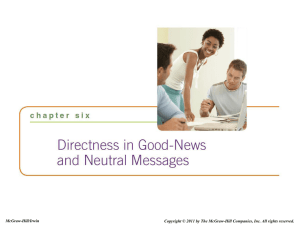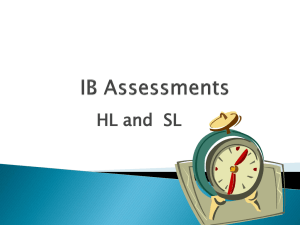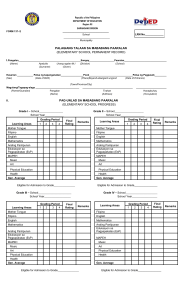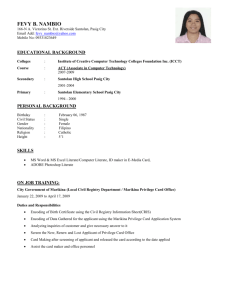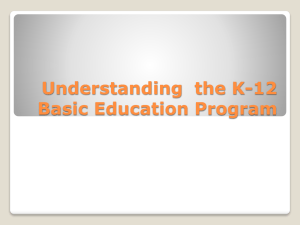Do Good Readers Make Good Reading Teachers?
advertisement
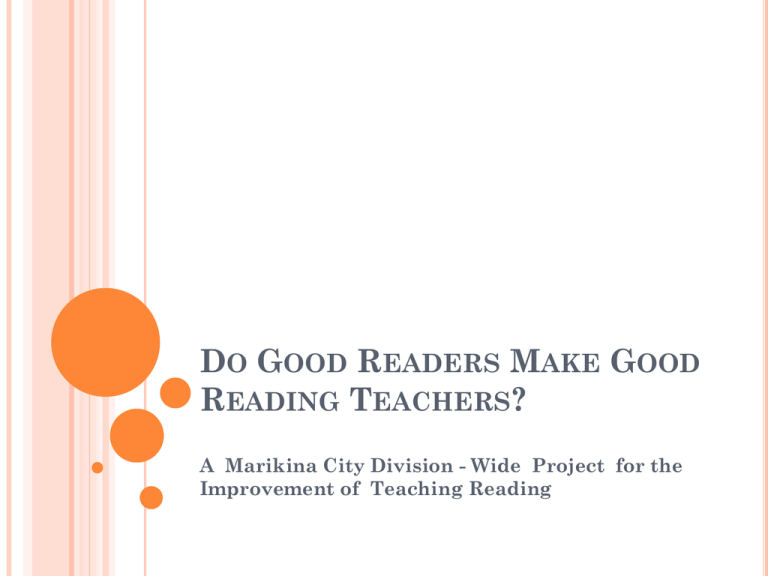
DO GOOD READERS MAKE GOOD READING TEACHERS? A Marikina City Division - Wide Project for the Improvement of Teaching Reading BACKGROUND The 2010 – 2011 National Achievement Test (NAT) Results show the following data: 1. For Grade 3, there is an overall decrease of 6.47 in the mean averages in all six subject tested English, Reading – 9.18 Math 8.86 Science 8.71 English,Grammar 6.97 Filipino,Grammar 4.59 Filipino,Reading 1.02 2. For Grade 6, there are increases in the mean averages for 3 subjects and decreases for 2 subjects; however, there is overall increase 0f 0.44. Increases: Filipino - 6.86 Math 7.87 Hekasi 5.49 Decreases: English Science 3.53 3.30 3. For Second Year High School, there is in overall increase of 2.82 in the mean average. Increases in AP - 13.97 Math 2.64 Filipino 0.85 Decreases in Science - 3.67 English 1.24 CONCLUSIONS 1. Except for Filipino in the Elementary Grades and all subjects in Second Year High School, all mean averages cluster around 30s and 40s. If there are 100 items in the NAT, the results suggest that very few students reach 50 or higher. If this is so, the scores do not auger well for the whole Division. 2. From the detailed report of mean scores per subject, we can see that the 2nd Yr. Science High School students made a dramatic jump from 52.67 to 74.01 mean average in Araling Panlipunan. Altho the Science High School is part of the Division, its students undergo selective admission and therefore the big increase could be considered atypical of 2nd year students in general. Can we attribute the increase of the mean average of the Second Year in Araling Panlipunan? 3. There is a general decline in the performance of students at the three levels in English and Science. Have these results been compared to previous NAT Results to identify a pattern or trend? If there is a pattern, shouldn’t this be worth looking into by all the school officials and teachers of the Division ? HYPOTHESIZING What could be the causes of the problems we have unearthed? Students -Not serious enough in studying? -No time for studying; more time spent for computer games? Teachers - Inadequate preparation? - Insufficient in-service training? - Lack of commitment to their job? - Too many other demands of their job? Materials - Poorly written materials? - Lack of books? - Library not functional? DepEd - Overcrowded classrooms? - Irrelevant curriculum? - Very low teachers’ compensation ? - Test items not consistent with curriculum? SOLUTIONS? Proposed solutions should be: addressing the problem(s) directly; be within our available resources – time, materials, manpower; affordable and doable. PROJECT PROPOSAL We need to have a solution that is more sustainable - NOT just a knee –jerk answer to the current problem; We need to standardize the training in the whole division- meaning a group will train all the teachers in a school directly; We need to have just one group a DIVISION READING TEAM which will be responsible for the upgrading of the teaching of reading. RESPONSIBILITIES OF THE READING TEAM DIVISION 1.Preparation of a Division Reading Program which will be the road map in teaching reading in the whole division of Marikina City; 2. Training teachers by schools for the proper implementation of the Division Reading Program 3. Monitoring the implementation of the Reading Program in their everyday work; 4. Establishing and maintaining a culture of reading in the division STEPS IN IMPLEMENTING THE PROPOSAL 1. Preparation of the Project Proposal Title: Do Good Readers Make Good Reading Teachers? Goals: -To raise the performance level of the Marikina City students in the National Achievement Test from hereon; -To encourage teachers and students to read as a lifelong habit. Objectives: - To organize a Division Reading Team who shall take charge of developing and implementing the division reading team; - To help advance the teachers’ professional skills in teaching reading; - To establish and maintain a reading culture in the Division of Marikina City. Methodology - Preparing data gathering instruments: A test for Teacher as Reader A test for Reader as Teacher An Observation Guide - Administering the test, Teacher as Reader, as basis for choosing the members of the Division Reading Team - Intensive training of the members of the Division Reading Team - Monitoring the teaching of the Team Members - Administering the Test, Reader as Teacher to members of the Team - Getting the coefficient correlation of the scores of two tests - Analyzing the data - Formulating conclusions and recommendations - Reporting the results of the research 2. Orientation of Division Officials and other stakeholders 3. Administration of the test, Teacher as Reader 4. Choosing the Members of the Division Reading Team 5. Intensive Training the Members of the Team 6. Monitoring Team to observe the Division Reading Team in action (Announced Observation) 7. Monitoring Team to observe the Division Reading Team in action (unannounced visit) 8. Administration of the test, Reader as Teacher 9. Establishing the coefficient correlation between the 10. Analyzing data. 11. Making conclusions and recommendations and implications. 12. Reporting the results of the research mean scores in the First Test and those in the second test. TIMETABLE September - Preparation of proposal; - Looking for standardized test for Teacher as Reader - Writing test items for Reader as Teacher October - Administration of the test to all teachers - Checking and scoring ` - Choosing members of the Division Reading Team November - Observation of classes of the members of the Team December - Administration of the test, Reader as Teacher - Analysis of data - Writing out conclusions and recommendations and implications - Reporting the results THANK YOU SO MUCH AND MAY THE ALMIGHTY BE WITH US AS WE VENTURE ON THIS PROJECT!






